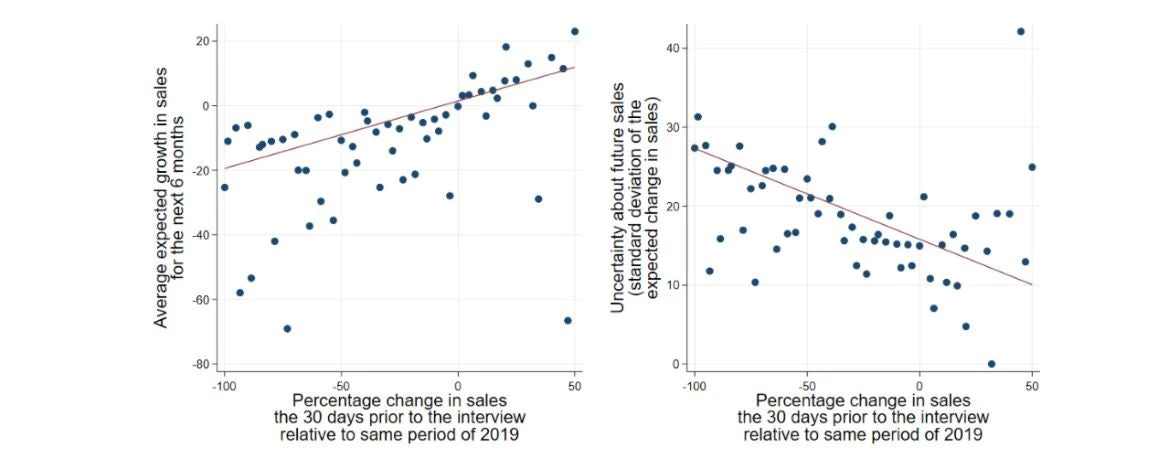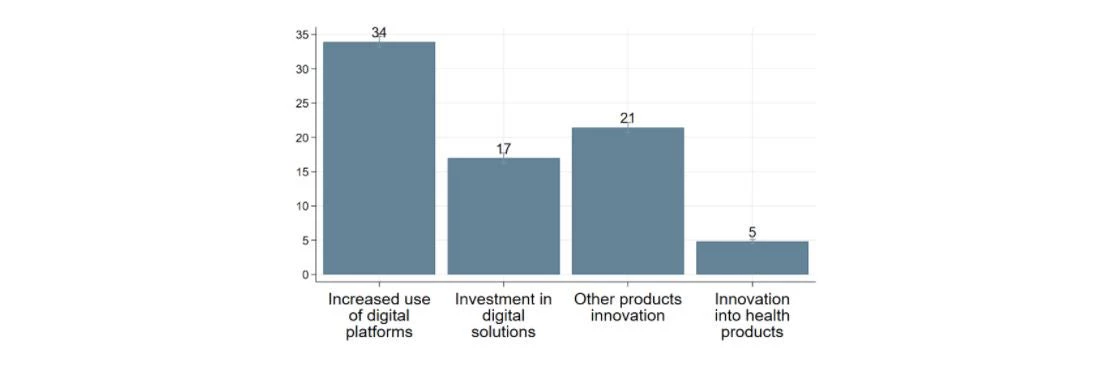 A software developer works in Kenya
A software developer works in Kenya
Firms and workers have been deeply affected by COVID-19. The severe and persistent impact on firm sales and balance sheets was described in the first blog post in this series, based on insights from our COVID-19 Business Pulse Survey. The blog also reported that firms had adjusted employment largely through temporary measures in June-August 2020. A third of firms had made no changes to their workforce, and only 19 percent had made layoffs, suggesting that, at that point, most businesses were uncertain about the duration of the shock and, subsequently, didn’t make drastic workforce adjustments.
High levels of uncertainty surrounding the pandemic can have major economic impact. Uncertainty about future sales doubled in the United States between January and June 2020, and it rose even further in developing countries. Surveys revealed that uncertainty is broad-based and cuts across all firms, irrespective of size, and is similar across sectors (Figure 1). The main exception is the accommodation industry, where the situation is significantly worse. The difficulty faced by businesses to predict future risks and returns limits their willingness to invest and innovate.
Figure 1: Uncertainty across countries and sectors

As expected, uncertainty is highest for the businesses hit hardest by the crisis. Firms that experienced a larger sales drop in the last 30 days are more pessimistic about future sales growth and also report higher uncertainty (Figure 2). This is the case across countries.
Figure 2: Expectations, Uncertainty and Drop in Sales

In order to adapt, firms are turning to digital technology. Our results indicated that firms facing less uncertainty are those that adapted by investing in digital technology. Similarly, firms that are better managed also tended to increase their use of digital technology. Our survey also showed that firms that are adjusting most successfully to the changes caused by COVID-19 are doing so using several mechanisms at once. For example, firms that expand the use of digital platforms, diversify into health-related products, or change their product or service offerings are also more likely to invest in new digital solutions.
Yet, while technology and innovation can help offset rising uncertainty, not all firms or countries are adopting these solutions. Globally, 34 percent of firms have increased the use of the internet, social media, and digital platforms in response to the pandemic, while 17 percent of firms have invested in new equipment, software or digital solutions (Figure 3). Around 5 percent of firms diversified into health-related products or services, and another 21 percent opted for changing some of their products or services, or by adding new ones.
Expanded use of digital solutions is much lower among smaller firms, which typically face tougher constraints in terms of incentives and lack of demand, higher uncertainty and weak complementary managerial capacities, less access to finance, and more difficulty accessing high-speed internet. There is also significant variation across countries, with firms in Africa and South Asia lagging significantly behind other regions in digital adoption. For example, the fraction of businesses that increased their use of online platforms ranges from 11 percent in Ghana to 81 percent in Indonesia.
Figure 3: Technology and Innovation Businesses Responses to the COVID-19 Crisis
(percent of firms reporting each adjustment)

While uncertainty is at record levels, data about how this impacts firms’ perceptions, expectations, and ultimately decision-making about the future are critical. Policy makers can support firms by increasing the predictability of policies—in terms of scale, scope, and duration-—and ensuring that implementation is based on objective and transparent criteria. Similarly, policy makers should leverage the boost in digital adoption and act to help broaden the reach and use of digital technologies—especially among smaller and harder-to-reach firms—to reduce uncertainty and pave the way to a stronger, productivity-driven recovery.
This is the second of a three-part blog series sharing insights generated by the COVID-19 Business Pulse Surveys. Part 1 discussed the impact of the crisis on sales, employment, and firm finances, while Part 3 explores policy responses by governments and the ability of firms to access policy support.


Join the Conversation